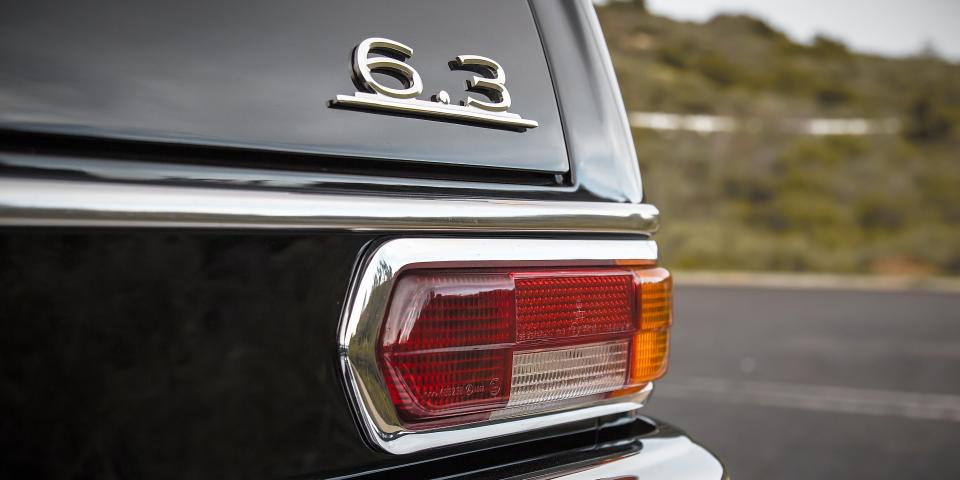Buy Mercedes-Benz's First Q-Car For a Pretty Penny
Lockheed's Have Blue prototype was designed to evade radar detection. After Vietnam, it was more important than ever to penetrate the Soviet Union's integrated defense network in order to avoid surface-to-air missiles. Have Blue's plate-like shape was designed to reflect electromagnetic waves, and represented for the first time a shift from aeronautical-based engineering to electrical engineering. Arising from Lockheed's Skunk Works department, and handpicked by DARPA, the first prototype made its maiden flight on December 1st, 1977 at Groom Lake, Nevada. A year later, it was approved it for production. It wasn't until 1988 that the resulting F-117A Nighthawk was revealed officially to the public-the blackest of black projects. The two prototypes in the Have Blue program cost $35 million, which over the decades of inflation would be worth $138 million today.
By that comparison, traveling stealthily in this 1971 Mercedes-Benz 300SEL 6.3 is the greatest bargain of all.

Mercedes-Benz built over 350,000 W108s and W109s for nearly ten years. Hardly more than a handful were born from the following, absurdly simple, formula: take the 6.3-liter M100 V8 from the ehrfurchtgebietend Mercedes-Benz 600 Großer limousine. Jam the bigger engine inside the smaller car. That's it. Unleash upon world. Stun the universe. Smoke a Dodge Challenger to 60mph in just 6.5 seconds. (How poetic would it be if it had been 6.3 seconds?) What we called back in November 1968 as "the greatest sedan in the world" arose from this, no greater origin story than a hypothetical "what if?" between bored German automotive engineers. Bored German automotive engineers are among the world's most dangerous people, because then they give us genre-defying bloatmobiles like the BMW X6 "Sports Activity Coupe."
Of course, these bored German automotive engineers had the resources to answer their little question.
And thus: the world's first "Q-Car." Lest you believe we are mixing our military hardware metaphors, the concept of a "q-ship" was a decoy vessel in the World Wars that looked like nothing particularly special, but packed plenty of firepower. Much like the Chrysler C-300 of 1955, in fact, which actually did pack a FirePower. What were we saying again? Ah, yes.

This particular example was restored by "a renowned marque specialist," according to Mercedes-Benz Classic, but inspected thoroughly by the fine engineers (less bored, possibly still Germany) at the brand's Classic Center in Irvine, California (not Germany). Perhaps that's why it commands such a high price. Imagine a near-surgical room, where gloved Germans handle every piece with the delicacy of art historians, or Swiss chocolatiers. This example retains its sinister black-on-black scheme, and a whole list of factory-installed equipment including Behr air conditioning, heat-absorbing glass, dual rearview mirrors, and a Becker Europa radio, as well as an upgrade to a satellite radio tucked away in the glovebox. Whitewall tires have been evicted, and bottle-cap Bundt wheels come with the originals.
Here, then, is the price of such precision: $225,000. Prices negotiable. Considering that Hagerty lists the average value of a 6.3 at $33,000, this may be a tad steep price to pay to look stealth.
Then again, your average F-117A cost around $111 million. And you can't pick up RawDog Comedy on one of those.

Images courtesy of Mercedes-Benz USA

 Yahoo Autos
Yahoo Autos 